- Science & Environment
- History & Culture
- Opinion & Analysis
- Destinations
- Activity Central
- Creature Features
- Earth Heroes
- Survival Guides
- Travel with AG
- Travel Articles
- About the Australian Geographic Society
- AG Society News
- Sponsorship
- Fundraising
- Australian Geographic Society Expeditions
- Sponsorship news
- Our Country Immersive Experience
- AG Nature Photographer of the Year
- Web Stories
- Adventure Instagram

Is Tasmania’s ecotourism boom compromising the natural state?

This is one of the few walks in lutruwita/Tasmania on which you can see both where you’ve been and where you’re going, photographer Matt Newton points out, as we approach the highest part of the South Coast Track. Up here on the Ironbound Range, in light mist, we’re 900m higher than we were last night at our rainforest camp on an elbow of Louisa River. Catching my breath, I look back over buttongrass plains to the track we’ve followed for three days. It stretches to the coast and trails west. Everything around us – the land, snaking waterways, sea, sky above and the plants and animals these ecosystems support – is palawa Country. More specifically, it’s the traditional homelands of the Needwonnee.
But the Needwonnee are no longer living, as a direct result of British invasion in 1803 and the ensuing violence of colonisation. The Aboriginal community of lutruwita today knows it’s their responsibility to care for this cultural landscape.
Located in Southwest National Park, the South Coast Track is an 84km-long bushwalk between Melaleuca and Cockle Creek. At 6183sq.km, Southwest is the largest national park in lutruwita. Along with Franklin–Gordon Wild Rivers and Hartz Mountains national parks, which both border it, Southwest contributes to the 15,800sq.km Tasmanian Wilderness World Heritage Area (TWWHA) – a chain of national parks and reserves covering almost a quarter of the island.
While lutruwita’s intense natural beauty has long attracted visitors, the state has more recently become a popular ecotourism destination. Nature-based tourism now significantly contributes to the state’s economy and, undeniably, there’s merit in the alternatives it offers to the more destructive mining and logging industries. However, there are concerns some economically driven tourism-related decisions could be jeopardising the natural and cultural values of the island’s protected areas.
To consider this, I’ve headed to the South West region for a hike I’d been meaning to do since moving to lutruwita in 2008. Surviving the South Coast Track – one of the world’s great ‘wilderness’ walks – requires everyone to carry a full pack of gear including tent, food and cooking equipment for the 6–8 days it takes most people to complete the route. Inclement weather means some sections of the track are perpetually wet and extremely muddy. Challenging waterway crossings and arduous ascents and descents are par for the course. Campsites with natural shelter, each with a drop toilet, are where walkers overnight along this remote route. But this might soon change now that the area has been earmarked for a string of private luxury huts.
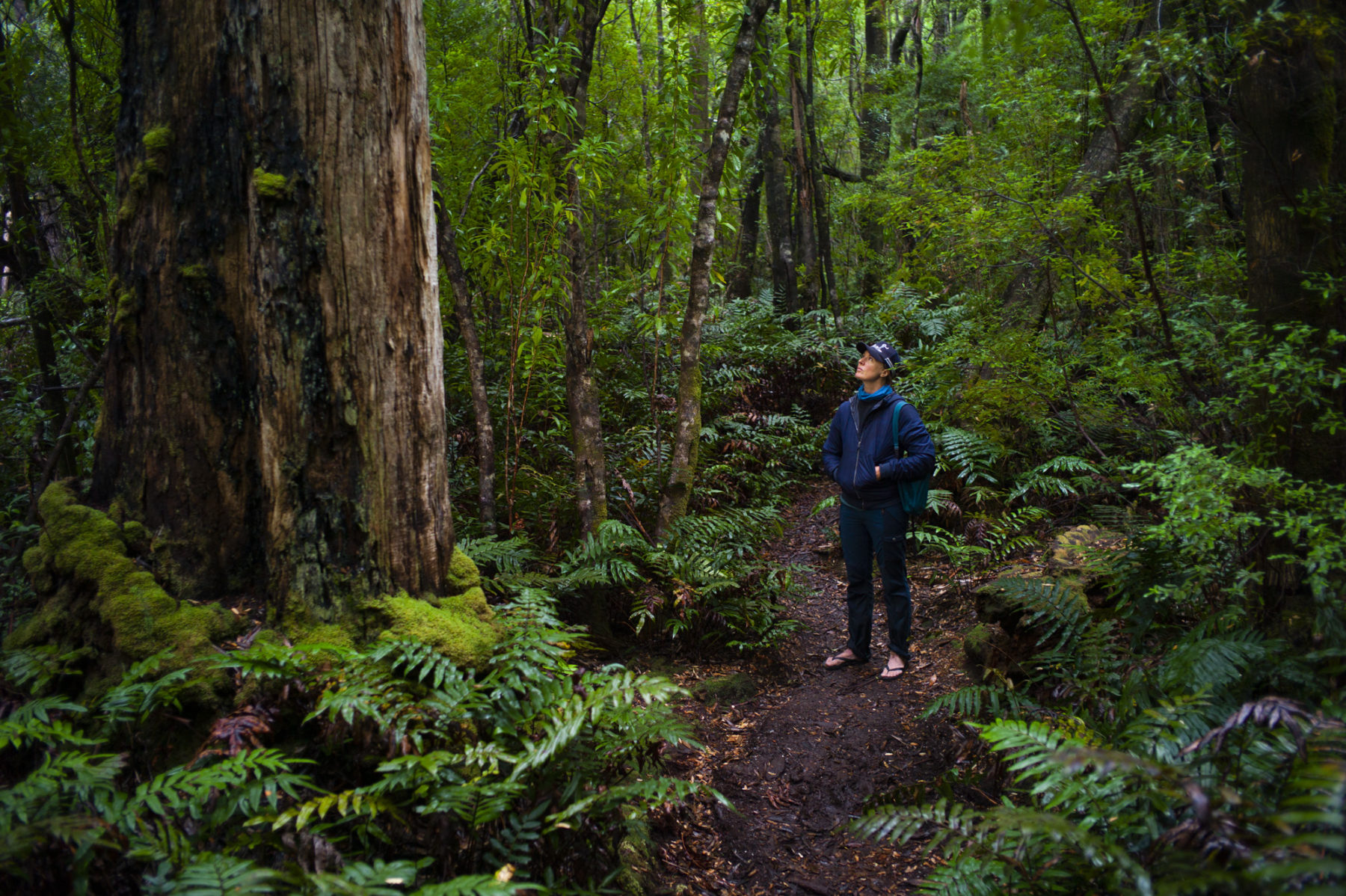
It’s not until the final 10 minutes of the 35-minute flight from nipaluna/Hobart to the remote airstrip at Melaleuca that we pass over land that hasn’t, at some stage, been heavily logged. Extensive damage has been done to this state’s natural environments during the past two centuries. For example, more than 85 per cent of lutruwita’s old-growth mountain ash forests are gone. Tasmania’s national parks and reserves play a crucial role in providing biodiverse safe havens for up to 680 threatened plant and animal species. At Melaleuca, Matt recently photographed a release of captive-bred critically endangered orange-bellied parrots . The species’ natural breeding grounds are nowhere else but here in the South West.
After landing, we head out on the Needwonnee Walk. It’s a 1200m-loop track that weaves through natural ecosystems and past ephemeral sculptures made and installed by palawa artists. Permanent interpretive signage explains the Creation story, which played out in part nearby at kripikara (the Cox Bight area).
We then set off along the South Coast Track. You can walk the trail in either direction, and during the 11.5km hike to our first campsite, we cross paths with several parties. They share information with us about river crossings and where to collect fresh water.
It’s possible to have guided experiences with ethical local operators in the South West. Trek Tasmania is one that offers seasonal departures: you still carry all your own gear and stay at public campsites, but the logistics are taken care of and you walk in groups with experienced guides.
Another operator, Roaring 40°s Kayaking, offers multi-day paddling expeditions on nearby Bathurst Harbour that require far less weight-bearing.
For our first camp, Matt and I set up in a melaleuca grove, near where Freney Lagoon drains in braids across sand into the Southern Ocean. Wombat prints mark the beach. Bull kelp keels in the swell like sea creatures bobbing for food. An exposed quartzite face serves as an appetiser to the dazzling geological diversity awaiting us. Around my tent, shiny-leafed native laurels reflect daylight and then moonglow. In the morning, I collect water in the fresh stream where on one bank delicate plants grow from silt between river rocks. After breakfast, we walk eastward along the beach towards an intermingling of low cloud, rising mist and sea spray. Eventually we turn inland.
After our 17km second day, we arrive at a campsite where Louisa River eases around a bend and roars over a rocky bed. Other walkers have already set up tents and are cooking, fishing, reading or having a dip. Ranging in age from nine to late-60s, they’re travelling solo, in couples or in small family groups. Few are the ultra-fit types I’d been led to believe would be the only people out here.
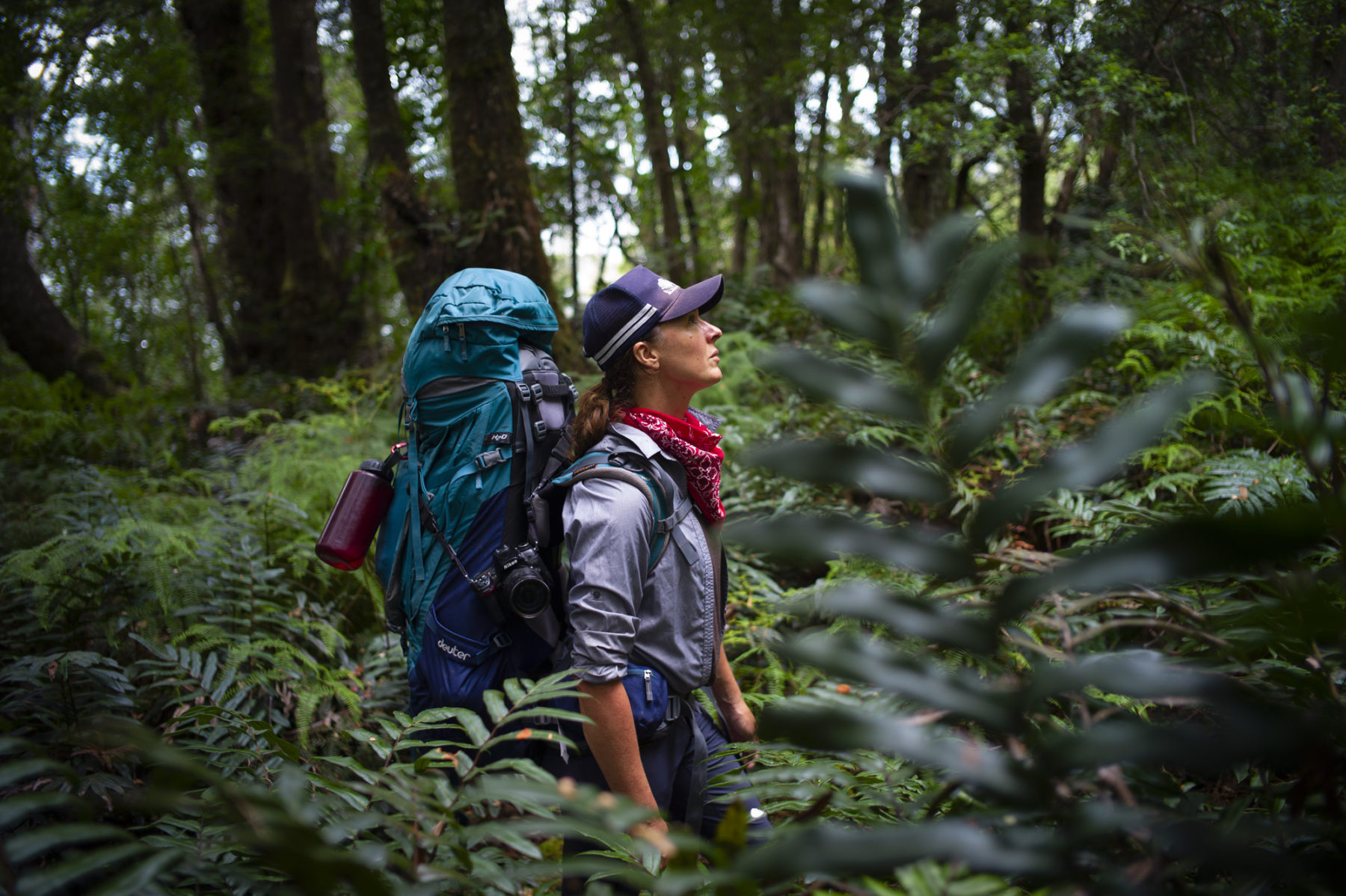
In March 2014, Tasmania’s government of the day called for expressions of interest (EOI) from private investors and operators to develop new “sensitive and appropriate” tourism products within national parks and reserves. Then-premier Will Hodgman envisaged expanding the state’s tourism industry to 1.5 million annual visitors by 2020 and the state becoming the “ecotourism capital of the world”.
In response, proposals included an art installation, e-biking tour, a multi-day cruise and a floating resort. One of the first submissions in June 2014 was from Tasmanian Walking Company (TWC) proposing a lodge at Lake Rodway, near the eastern side of Cradle Mountain, to accommodate 24 guests for two-night/three-day bushwalking experiences. By February 2015, five of 37 projects had been approved to proceed to stage two. In December 2016, the state government released a revised TWWHA Management Plan, which saw some places previously zoned as “wilderness” reclassified as “self-reliant recreation”. That same month, round two of the EOI process launched.
By August 2022, 10 projects had been issued leases or licences and commenced operating. Some 14 others had been endorsed and were in the assessment phase. The invitation for submissions remains open. There is no expiry date for lodged EOI, and while one is in the system, others can’t be proposed for the same location.
The EOI process has attracted scrutiny from public individuals and organisations, including the Tasmanian Aboriginal Centre, Fishers and Walkers Tasmania, the Wilderness Society, Bob Brown Foundation and the Tasmanian National Parks Association. The latter, in its June 2022 e-newsletter, criticised the state government’s “refusal to accept that there needs to be limits to visitor numbers in many of our national parks”.
A proposed semi-permanent camp to accommodate guests on Halls Island in Lake Malbena, within the Walls of Jerusalem National Park, which forms part of the TWWHA, has garnered significant public opposition. The submission for this luxury tourism product by Daniel and Simone Hackett, of RiverFly 1864, anticipated 240 annual helicopter transfers between Derwent Bridge and Lake Malbena. When Central Highlands Council refused the proposal in 2019, proponents took it all the way to the Supreme Court. RiverFly 1864 eventually withdrew its planning appeal yet continues to hold a signed lease/licence “subject to conditions”.
Basic information on proposals appears on the website of the Office of the Coordinator-General. However, many people have raised concerns about an overall lack of transparency in the EOI process. Among them is Holger Strie, founder and managing director of Trek Tasmania. “We’re the largest walking operator in the Walls of Jerusalem NP, but when it comes to Malbena, we were never consulted about any of it,” Holger says. “Surely, before any of this, you’d talk to those operating quality trips there.”
Sharnie Read, a palawa woman and an Aboriginal heritage officer and project facilitator for the Tasmanian Aboriginal Centre’s rrala milaythina-ti (strong in Country) project is also concerned. “The first we’ll know about anything,” Sharnie says, “is that these developers are knocking on the [Tasmanian Aboriginal community’s] door saying we want to consult with you. But [the projects] have already been taken to stage two by the government.”
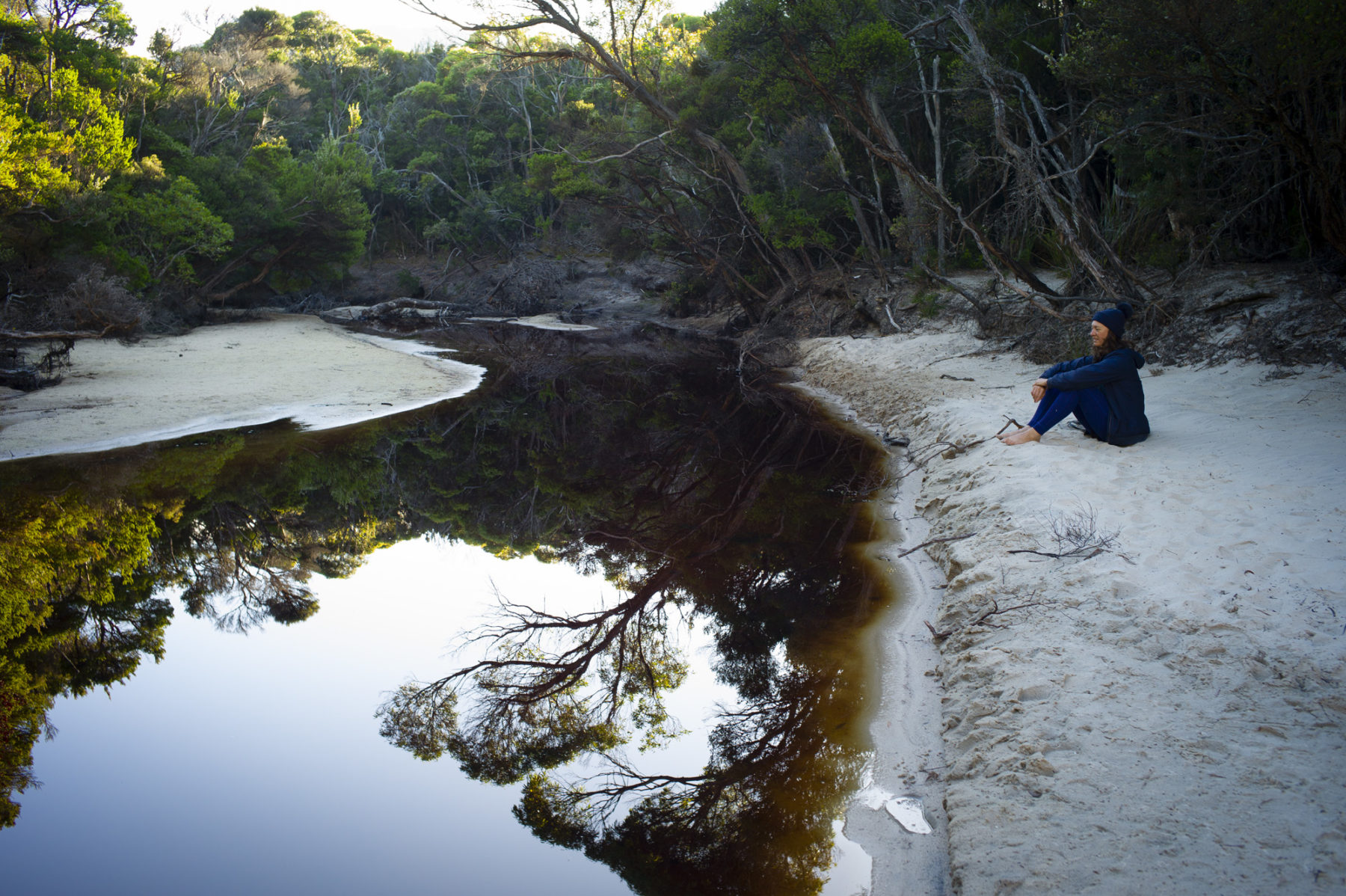
For thousands of generations, palawa have sustainably managed lutruwita’s many landscapes. As part of rrala milaythina-ti, Sharnie leads 10–12 trips a year, each up to nine days and to a specific location in lutruwita. The South West is one; a place Sharnie’s been to at least twice a year for 25 years. “For us, it’s about going into that Country, engaging in that space, learning, teaching and sharing those cultural values,” she says, explaining that these experiences deepen cultural identity. “Giving community members that reconnection and ability to get out and recharge is a medicine we can’t get from any doctor.”
Sharnie knows Aboriginal people in lutruwita each have an individual take on the EOI process. “[But] in a general context, and with my conversations with community members, it’s not supported,” she says. The Tasmanian Aboriginal Centre, which represents local political and community development aspirations, publicly opposes a six-hut high-end hiking experience proposed for the South Coast Track by ASX-listed Experience Co.
From Sharnie’s experience, private development in protected areas leads not only to desecration of sacred art, burial and ceremonial sites but causes cultural disruption and destruction in other ways too. One part of a landscape, she explains, leads to other spaces that may lead to a cultural ceremonial space. “Take those little aspects away and we’ll struggle to get to those ceremonial places,” she says. “They are as important. Just because there’s not a physical element in that landscape, in regards to what you consider as culture, doesn’t mean we see it that way at all.”
She understands non-Indigenous people, too, connect, in their own way, with the South West. Any suggestion, then, of Aboriginal land management can generate fear that non-Indigenous people will be denied access. “We’re not a community that shuts people out,” Sharnie says. “We don’t lock spaces off. If that was the case, we would have been saying a long time ago that the South Coast Track should be closed.”
There are heritage sites on the south coast of lutruwita that are at least 11,000 years old. “Some of our most sacred spaces on our island are our art sites because they’re the stories our Old People left for us,” Sharnie says. One site contains more than 600 overlapping images with stories able to be followed as they’re told through human figures, trackways and lizards. “Then you look to the side of that beautiful site, and its deep history of layers and layers that have been added to by community members and Ancestors, and there’s graffiti,” she says, describing it as soul-destroying.
It’s clear to Sharnie that if such impacts continued they could destroy living cultural landscapes forever. “What,” she asks, “will the people of lutruwita have to reflect on then? Destruction? The very things that people say they want to come here for, and that they value, will be gone.”
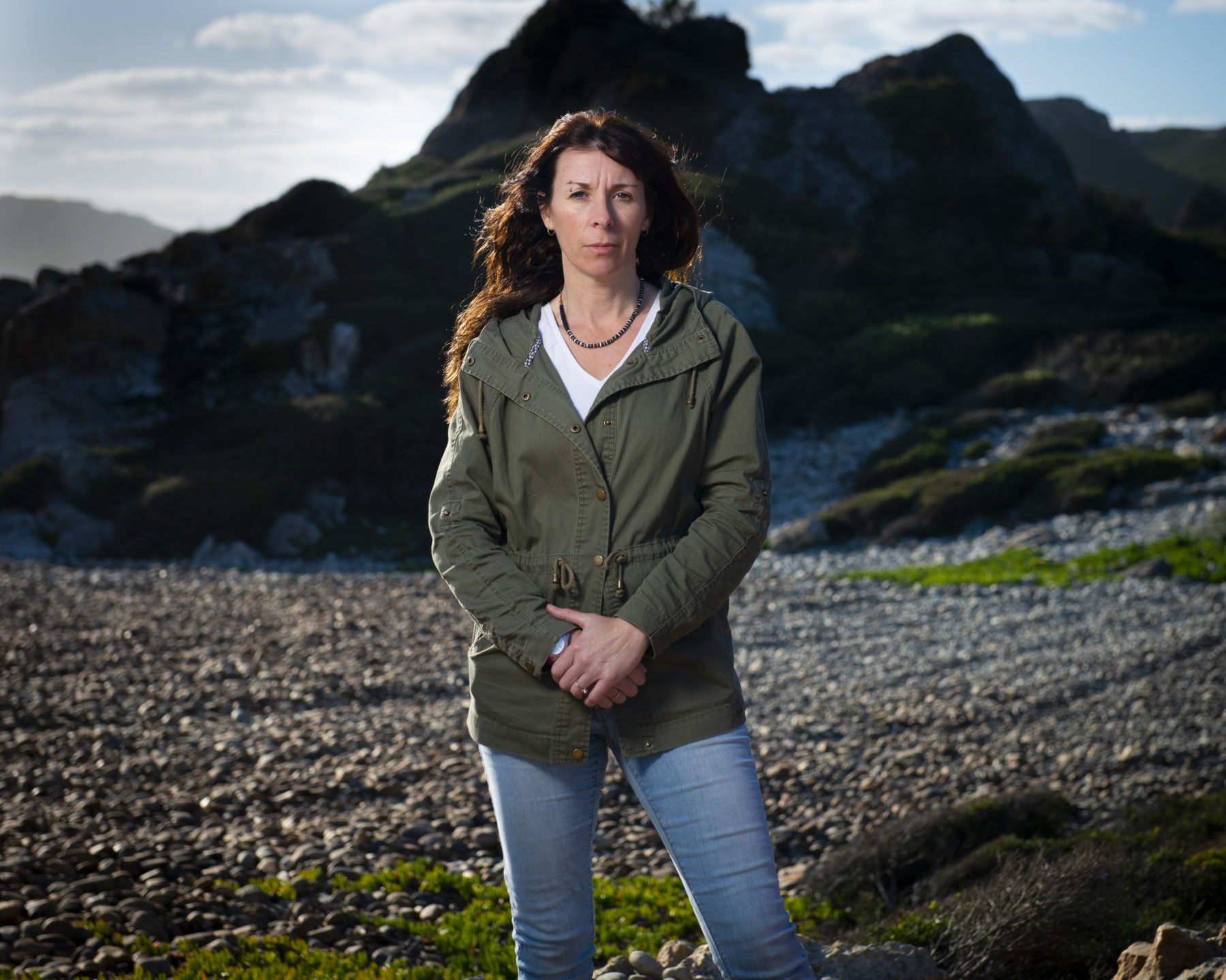
Private tourism-related development on public land isn’t unprecedented in lutruwita. In 1985 the state government sought tenders for Australia’s first commercial hiking operation in a national park, along the Overland Track in Cradle Mountain–Lake St Clair NP. Joan Masterman and Ken Latona won the contract, built four huts (later a fifth), and Cradle Mountain Huts was operational by 1987.
The following decade, they collaborated on Friendly Beaches Lodge in Freycinet National Park. In 2013 Virgin Blue Airlines co-founders Brett Godfrey and Rob Sherrard bought Cradle Mountain Huts and, in time, renamed it Tasmanian Walking Company (TWC). Two years later, Brett and former Qantas CEO Geoff Dixon created Australian Walking Company, and secured commercial licences to operate luxury multi-day walks in national parks within other Australian states and territories.
TWC’s Three Capes Lodge Walk opened in Tasman National Park in 2018 and they currently have four EOI in the pipeline. All propose building private huts, lodges and/or permanent camps in the TWWHA: Cradle Base Camp Experience, Overland Track Experience, Frenchman’s Cap Walk and Walls of Jerusalem Lodge Walk.
Along with the Experience Co proposal for the South Coast Track Walk, these projects are all currently progressing through the EOI process.
National Parks Australia Council – a coalition of state-based conservation groups – commissioned a poll in February 2022 “in response to the increasing trend of federal and state governments proactively spruiking and funding development and commercial interests over nature protection in national parks”.
A total of 1222 Australians, across all states and territories, were surveyed and the resulting report revealed 89 per cent agreed national parks are one of the best ways to protect nature in Australia, while 78 per cent said they did not support development in parks and protected areas.
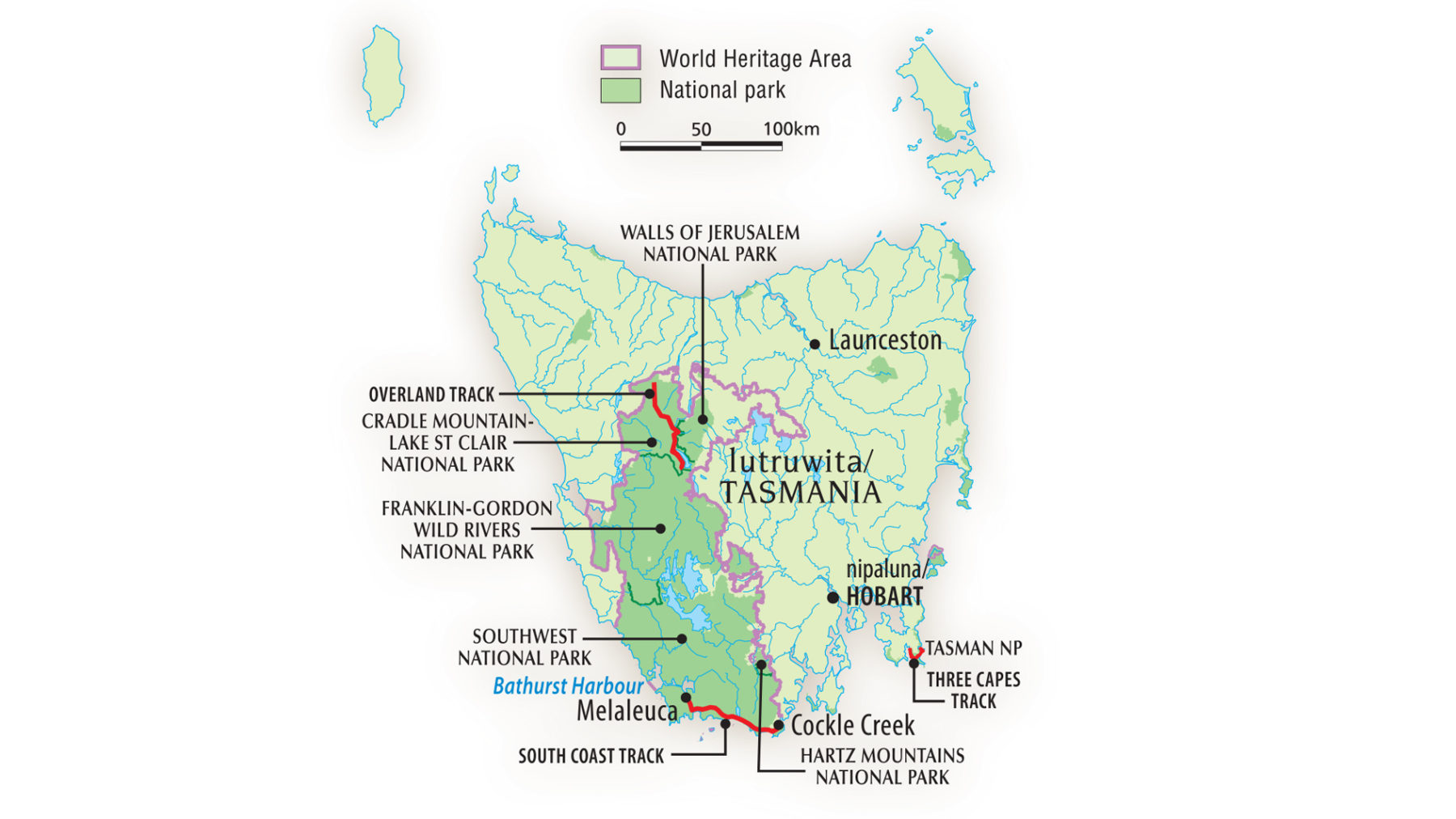
The Tasmanian wilderness was inscribed on the World Heritage List in 1982 and meets seven of UNESCO’s 10 cultural and natural selection criteria. In its 2021 mid-year report, UNESCO raised concerns about the lack of guidelines around how the wilderness values of the TWWHA are considered in decision-making processes related to tourism management and the EOI process. It has requested a detailed plan for comprehensive cultural heritage assessment before any development begins.
The South Coast Track Walk EOI was originally submitted by Ian Johnstone, then-owner of the Maria Island Walk – a four-day guided experience in Maria Island National Park off lutruwita’s east coast. In 2018 the federal government granted $2,950,000 for advancement of this Southwest NP-based development proposal. In 2021 Ian sold his business to Sydney-based adventure tourism company Experience Co, along with two South Coast Track-related EOI and the Maria Island EOI.
“When Maria Island was locally owned, I didn’t actually think they would get the South Coast project up because there are so few people in Tasmania that agree with it,” says Jenny Grundy, former co-owner of Roaring 40°s Kayaking. “Now it’s just a big company who aren’t going to care that most of Tasmania doesn’t want it there.”
Currently, the state’s most popular multi-day walk is the 48km-long Three Capes Track in Tasman NP. It’s the biggest construction project to date for the Tasmania Parks and Wildlife Service (PWS) – a $25.3 million state and federally funded development that involved three new public huts and upgrading of the original track linking Fortescue Bay to capes Hauy and Pillar. The build required 17,400 helicopter flights and the project opened in December 2015.
TWC won the tender to operate, on the same track, what has now become their Three Capes Lodge Walk. TWC pays $50,000 per year, or 5 per cent of its profits, whichever is greater, for the lease and the licence to operate two commercial lodges in the national park. It has a 30-year exclusive lease.
“No other company is allowed to do a guided walking experience on Three Capes,” says Holger Strie of Trek Tasmania. They can do day walks from either end, but they’re not allowed to guide Three Capes Track. “That was an exclusive deal done for one company.” In addition, the Tasmanian government has covered more than $300,000 of TWC’s marketing costs since 2019.
It’s still possible to independently hike to Cape Pillar, the tallest sea cliffs in the Southern Hemisphere, and camp en route. Yet it’s a very different experience from what it was prior to 2015, due to the considerable increase in year-round visitation, relocated campsites, an extensive metre-wide boardwalk and the gigantic boulders Parks and Wildlife had lowered, by helicopter, onto the cape to create a safer more fortress- like pinnacle.
Back when Three Capes Track was just a concept, supporters reasoned that building within Tasman NP was acceptable because the park’s wilderness value wasn’t as high as that of the TWWHA. Fast-forward to 2016, when the $160 million Cradle Mountain Master Plan proposed the construction of a cableway connecting a new visitor centre (opened in 2020) to Dove Lake, in Cradle Mountain–Lake St Clair NP.
Market research firm EMRS surveyed 600 visitors to Cradle Mountain–Lake St Clair NP on behalf of Tasmania PWS. EMRS’s 2021 report revealed 89 per cent were totally satisfied with the Dove Lake shuttle bus service and 81 per cent of respondents rated their overall experience of the park either nine or 10 out of 10. Until the report was leaked, those results were not publicly available.
On the home stretch of the South Coast Track, I turn my back on the Southern Ocean and walk north-east towards Cockle Creek. Everything hurts. Matt has galloped ahead. Day walkers coming in the opposite direction see my pack and congratulate me. Some even clap. I chat with almost everyone and learn that, despite their enthusiasm for my achievement, very few have walked more than this section or have any intention of ever journeying further into the South West. It seems enough for them just to know places like it exist.

Bringing back the eastern bristlebird
Eight captive-bred eastern bristlebirds (Dasyornis brachypterus) were recently released into the Border Ranges region of north-eastern New South Wales where they're considered a critically endangered species.

World-beater solo yachtswoman Lisa Blair racks up two big sailing records while taking her climate message across the ditch
Breaking world sailing records seems to come naturally to Lisa Blair. Her beaming face and calm but celebratory arrivals in destination ports give little away of the perils, discomforts and sheer loneliness of the epic ocean voyages she completes.

Even as the fusion era dawns, Australia is still in the Steam Age
Steam locomotives clattering along railway tracks. Paddle steamers churning down the Murray. Dreadnought battleships powered by steam engines.
Watch Latest Web Stories
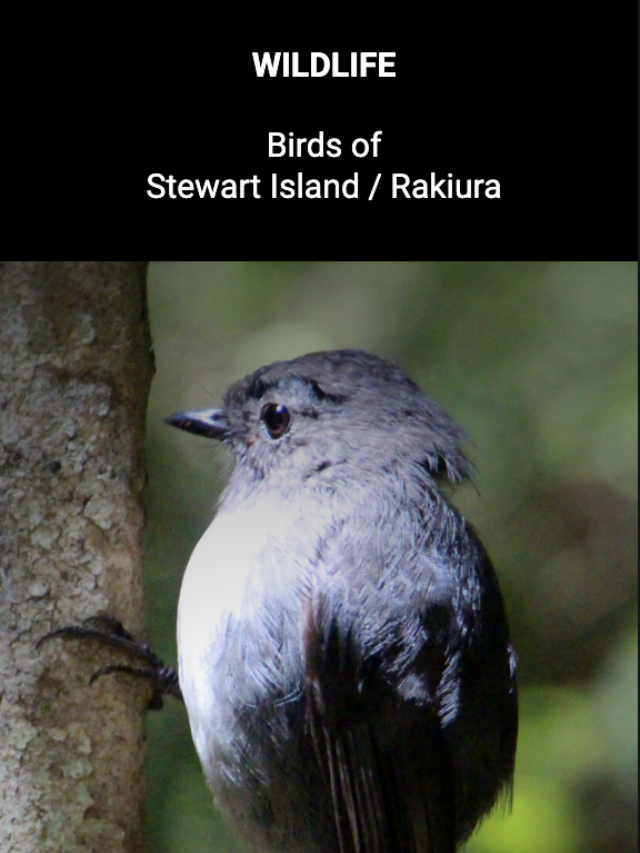
Birds of Stewart Island / Rakiura
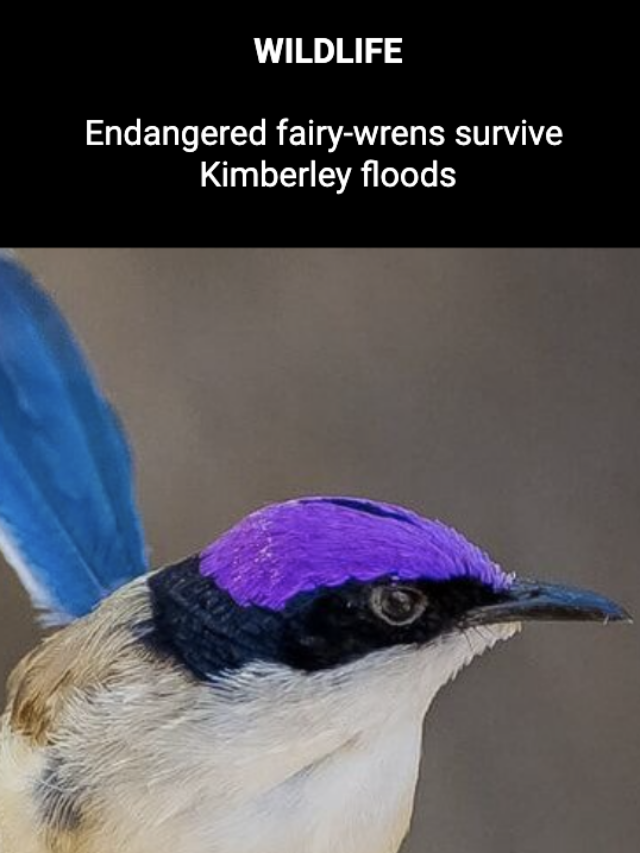
Endangered fairy-wrens survive Kimberley floods
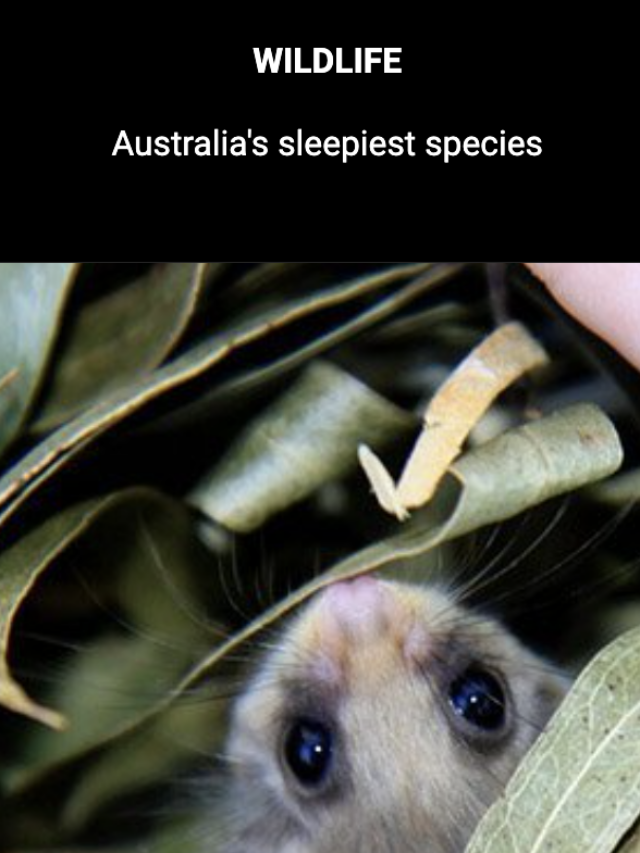
Australia’s sleepiest species
business .gov.au
Grant of a lease or licence for crown land or reserved land - tasmania, description.
You will need to hold a Crown lease or licence if you intend to use or occupy Crown Land or reserved land.
A lease can be granted for any purpose that the agency sees fit. Leases are generally issued where longer-term commercial activities are proposed or there are existing buildings or structures on the Crown Land or reserved land. Examples include:
- buildings / improvements / structures
- commercial ventures
- sporting facilities.
A licence can be granted for any purpose that the Agency sees fit. Generally, licences are issued to authorise the use or occupation of Crown Land or reserved land. Examples include:
- shared access over reserved roads
- maintenance
- private slipways and jetties.
If you intend to provide nature based tourism services, you will need a Nature Based Tourism licence.
To obtain a licence to conduct mining activities, you must also obtain mining rights.
Service type
A licence defines the need to obtain recognition / certification and registration to undertake a certain business activity.
Eligibility requirements
Please contact the agency to identify any eligibility requirements.
Leases can be for a period of up to 99 years. However, leases for rural purposes can only be up to 21 years. The duration of a licence will be determined during the application process. A temporary licence can be granted for a period of 12 months.
Fees Details for this service in table format.
Other resources
Act(s) name.
Crown Lands Act 1976 Tasmania
Regulation(s) name
Crown Lands Regulations 2021 Tasmania
Administering agency
Department of Natural Resources and Environment
Parks and Wildlife Service
Contact details
Contact Email, Phone and Address Details for this service in simple two column table format, header then data.
Supporting information
Leases and Licences (Opens in new window)
Greens launch nature-based tourism plan
Tabatha badger | lead candidate for lyons.
Nature is a significant part of Tasmania’s identity, lifestyles, and our economy. Nature-based outdoor activities generated $334 million in spending and was responsible for 3,100 full-time equivalent jobs in 2016. Our future is investing in nature-based tourism that enhances Tasmania’s unique environmental values, which is why the Greens have today launched a comprehensive nature-based tourism plan.
The Greens will:
- Invest in visitor infrastructure and promotion for eight big tree tourism destinations across the State
- Fight for the TWWHA to be declared a dark sky sanctuary, starting with the Southwest National Park
- Champion the development of an avitourism strategic plan for Tasmania
- Push the Government to work with landcare and conservation organisations to promote, and help them develop, conservation tourism products
- Fight for the restoration of Parks and Wildlife as a well-resourced service, with a core focus of protecting and enhancing the environment of our unique Parks, and that works with all tourism operators – small and large – to ensure fair and sustainable access to Tasmanian parks and reserves
“Tasmania's natural environment is our tourism industry’s greatest and most valuable asset. It permeates almost every aspect of our identity, community, culture and industry. It underpins our brand and defines our sense of place.
“A strong tourism industry, with environmental integrity, is crucial in providing sustainable jobs for Tasmanians - particularly in regional areas.
“For too long our regional communities have been at the mercy of boom and bust industries, and it’s time to change that.
“Only the Greens have a plan that champions what nature can provide Tasmanians while simultaneously embracing what we can do for nature to ensure the longevity of a thriving tourism industry.
“We’ve seen how short-sighted decision making from the Liberals and Labor has destroyed what is unique about our environment in order to turn a quick buck.
“The Greens’ plan for environmental protection alongside investment in low-impact and high-yielding tourism will ensure that Tasmanians and visitors alike can experience our state’s unique places and experiences into the future.”

Jeremy Rockliff
Premier of tasmania, 26 september 2017 , minister for environment, parks and heritage, nature based tourism a key to tasmania’s visitor economy.
The Hodgman Liberal Government’s Parks 21 Plan is our commitment to work with the tourism industry to drive sustainable tourism in our parks and natural areas.
It was my pleasure this morning to speak at the 2017 Parks 21 forum, where it was demonstrated once again that Tasmania now has the right balance for eco-tourism.
The Tourism Information Monitor has confirmed that, amongst people who were considering a visit to Tasmania, our nature and wilderness are the state’s biggest selling points.
That is why the Hodgman Liberal Government invested over $15 million this financial year for nature based tourism experiences to help create Tasmania as a world-class eco-tourism destination for the world.
The latest visitor statistics tell us that over 520,000 tourists visited National Parks in Tasmania - an amazing increase of over 13 per cent to the year ending June 2017.
Through nature based tourism initiatives such as Parks 21, Tourism Infrastructure in Parks Funding, the Freycinet and Cradle Mountain Experience Master Plans, and the Maria Island Rediscovered project, we are making sure that these people can visit these special places, and ensure they are preserved for future generations to enjoy.
Our vision is to present our parks and inspire our community to explore and enjoy the natural attractions that make Tasmania the envy of the world, but to do that we must plan ahead and invest in new products and better infrastructure.
More Media Releases from
More Media Releases from the Minister for Environment, Parks and Heritage

File(s) under permanent embargo
The natural state: nature-based tourism and ecotourism accreditation in tasmania, australia, publication title, department/school, place of publication, rights statement, repository status, socio-economic objectives, usage metrics.

- Tourism policy
- International edition
- Australia edition
- Europe edition
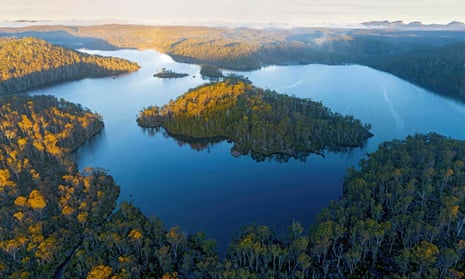
Privatising the wilderness: the Tasmanian project that could become a national park test case
Conservationists say newly released documents call into question the government’s policy of backing tourism developments on protected public land
Halls Island, on Lake Malbena in the Walls of Jerusalem national park, is not easy to reach. It takes a strenuous eight-hour walk or a helicopter ride to get there.
Its remoteness meant it was relatively little known until it became the site of the type of conservation battle that Tasmania has become famous for in a storied history that takes in fights over hydroelectricity dams , old-growth forestry and salmon farming .
In 2015, an ecotourism business, Wild Drake, proposed a small tourism development on the island. Described as a luxury standing camp, it would involve four demountable huts housing up to six visitors at a time and helicopter flights into the Tasmanian world heritage wilderness up to 60 days a year.
The Tasmanian Liberal government has been a strong supporter as it pushes to become what the premier, Peter Gutwein, has called the “ecotourism capital of the world” . According to the environment and parks minister, Roger Jaensch, the development “can be appropriate, sensitive [and] manage the values of the world heritage area it’s operating in”.
Conservationists say new government documents released shortly before the Tasmanian election was called have cast this in doubt.
Seen by Guardian Australia, they include a previously unreleased assessment by the state’s Parks and Wildlife Service that found the development could lead to the loss of 700 hectares of high-quality wilderness area and reduce the quality of at least 4,200 hectares – an area 23 times the size of the Melbourne CBD.
They say the parks agency’s wilderness quality assessment, undertaken in March last year, undermines the case for the Halls Island development and calls into question the government’s policy of backing more privately-owned tourism developments on protected public land.
Since being elected in 2014, the Liberals have called for expressions of interest from tourist operators for this sort of project and plan to continue the policy if re-elected on 1 May. It has given initial approval to 29 projects of various scales, including guided walks with private huts in the southwest national park and other world heritage areas.
The Wilderness Society says the Halls Island proposal, which currently sits with the federal government, should also be seen as a test case with implications beyond Tasmania as other states including Queensland, New South Wales and South Australia back developments in national parks.
The group’s state campaign manager, Tom Allen, who obtained the documents under freedom-of-information laws, says the parks agency had found the development would degrade “the very thing they’re supposed to look after, and the very thing people visit Tasmania to experience – the world’s most highly-rated world heritage wilderness”.
“The supporters of the parks privatisation push keep talking about sensitive development when this shows it is actually destructive to world heritage wilderness,” he says.
The proponent of the Halls Island development argues otherwise. Wild Drake’s Daniel Hackett, who runs a fly-fishing tour guide business with his wife Simone, says he asked the parks agency to do the newly released wilderness assessment and does not dispute what it found. He just disputes what it means.
Hackett says it shows the project’s impact on wilderness is only the proposed helicopter access, that the total annual flying time would be just 45 hours, that there would be no impact on the 300 days a year when there were no helicopter flights, and that 700 hectares of lost high-quality wilderness equates to just 0.05% of total high-quality wilderness in Tasmania’s vast world heritage area.
He argues “presentation” – tourism – is a Unesco obligation for the world heritage area alongside conservation, and that air access to Halls Island is more environmentally friendly than bushwalking through bogs and sensitive wetlands.
“It also allows us to share the wild places with a broader group of respectful visitors whom otherwise wouldn’t get to know and protect this place,” Hackett says.
“For the Wilderness Society to say that this level of impact is in any way significant is quite frankly ridiculous. The Wilderness Society is looking for conflict when we should all be working to conserve and share Tasmania’s wild places.”
Is any development in world heritage wilderness OK?
This goes to the heart of the dispute: whether any commercial development in world heritage wilderness – and any loss of the high-quality wilderness values that led to areas such as the Walls of Jerusalem national park being protected in the first place, no matter how small – is justified.
If it is – as the Tasmanian government argues – how much is OK? At what point of development is wilderness no longer wilderness?
The Halls Island proposal is currently before the federal environment minister, Sussan Ley, who last year found the proposal was on a scale that warranted assessment under the national Environment Protection and Biodiversity Protection (EPBC) Act.
Explaining her reasoning last September , Ley appeared to disagree with the Tasmanian government and Hackett that his proposal would have limited impact. She said the advice that she had received – which included the parks’ wilderness assessment – indicated the scale of impact on the world heritage area’s values would be “substantial”. But she stressed this did not mean her decision had already been made.
Her ruling followed public opposition, including from bushwalkers and fishers , and legal challenges. Ley used her discretion to order the assessment against the advice of her department, and effectively reversed an earlier decision made under the former environment minister, Melissa Price, that was overturned by the federal court .
The new parks assessment is consistent with an analysis commissioned by the Wilderness Society in 2018, and follows warnings from the Australian Heritage Council and the National Parks and Wildlife Advisory Council . The Tasmanian Aboriginal Heritage Council has raised concerns from a cultural perspective.
It also appears at odds with the parks agency’s consistent public support for the Halls Island development.
Allen says the government’s plan to allow private development in parks was flawed from the start. It called for expressions of interest, which were assessed by a panel against four criteria before being publicly announced as having government support.
He says the process lacked transparency and in some cases regulations had been watered down to allow developments to go ahead. In the case of the Halls Island development, the part of the world heritage area in which it sits was rezoned from “wilderness” to “self-reliant recreation” .
Among the Wilderness Society’s objections is its belief that “public land is being privatised for profit without transparency”.
Luke Martin, the chief executive of the Tourism Industry Council Tasmania, says the science of whether there is impact on world heritage areas is best left to experts, but critics such as the Wilderness Society and the Greens have an ideological opposition to any development proposal in parks. He says every plan is unique and should be assessed on its merits.
“We think there is a role for commercial development in national parks and the world heritage area,” he says. “Every form of human activity is going to have an impact on the wilderness values. It’s just a matter of how you can do that in a minimal way that has a minimum impact on the environment and allows people to experience these places.”
Martin is dismissive of claims the Halls Island proposal would be “the thin edge of the wedge” or that developments are being rushed through without transparency. “Seriously, look how long it has taken to get anywhere,” he says. “We are not seeing this massive onslaught of projects.”
The Liberal party says it remains committed to its policy. Through a spokesperson, it says its approach has “been very successful over many years in promoting Tasmania’s unique wilderness and nature-based tourism experiences on the world stage”, and that all proposals including that for Halls Island need to receive official heritage, environmental and cultural approval.
The Labor opposition, led by Rebecca White, did not respond before publication. The Greens say the parks assessment is “an indictment on the government” as it shows its policy would allow “damage to the very values that underpin the reserve”.
Vica Bayley, a Greens candidate and longtime environmental campaigner, says both the world heritage committee and state laws for managing national parks are clear that wilderness should be protected from developments such as huts and helicopters. “This new assessment demonstrates that those impacts are real,” he says.
He says the government has pushed “all the way” to approve the Halls Island development. “Now they have done this assessment the question is: what happens to it? The logical thing parks could so is review the current assessment, cancel the approval and strengthen the process to ensure it doesn’t happen again.”
Allen says the Wilderness Society’s position is that it supports nature tourism, but that development should be outside protected areas.
“We recognise that properly managed tourism has lots of upsides and it is better than extractive industries. There is a beautiful win-win out there of properly managed tourism and conservation working together,” he says.
“But if Tasmania wants to be the ecotourism capital of the world it has to be serious about these things. It can’t go on the way it has been.”
- Environment
- Tasmanian politics
- Tourism (Australia)
- National parks
Comments (…)
Most viewed.
404 Not found
Great Australian Secret

- Videos About Tasmania
- Explore Tasmania
- Book A Hotel
- Book An Adventure
- Beer & Breweries
- River & Ocean Cruises
- Fascinating History
- Markets & Bazaars
- Thrills & Adventure
- Curious Antiquities
- Whisky Distilleries
- Deep Wilderness
- Historic Railways
- Responsible Ecotourism
- Southern Tasmania
- North West Tasmania
- North East Tasmania
- West Coast of Tasmania
- East Coast of Tasmania
- Central Tasmania
Tasmanian Ecotourism

Environmentally responsible tourism ensures Tasmania’s precious geographic features are preserved for the visitors of tomorrow … while being accessible and inspiring to the visitors of today .
To reduce the impact of human activity on Tasmania’s stunning natural assets, environmentally responsible tourism , or ecotourism , is practiced at dozens of locations across the island. Ecotourism achieves significant goals for both visitors and the location they’re visiting: visitors are provided with a unique and remarkable experience; all while zero environmental impact occurs at and around the location they’re visiting.
Tasmania sits on the forefront of world-standard environmentally responsible tourism practices. Passionate eco-adventure operators provide cruises and excursions into some of the world’s most precious wilderness locations. Six-star eco-lodges offer luxurious, carbon-friendly accommodation while simultaneously supporting local economies. Ancient indigenous culture is preserved, respected, and shared with the people of today. And local businesses and communities flourish on the financial activity provided by visitors to the area.

Ecotourism thrives in Tasmania for two reasons. Firstly, Tasmania’s unique geographical assets are found in every corner of the island. Secondly, these rich assets are lovingly cared for and zealously protected by fanatical watchkeepers: the people of Tasmania.
By visiting attractions that have a commitment to responsible ecotourism practices, visitors can rest assured that their ticket fare is contributing to the protection and conservation of the environment they’re visiting.
Choose from many ecotourism locations in Tasmania:
National Park
Protected wilderness area.
Tahune Airwalk
Walk through the treetops.
Saffire Wilderness Lodge
Six-star eco retreat.
Rafting on the Franklin River
Environmentally-friendly rafting.
Maria Island Walks
Environmentally-friendly walking expeditions.

Belgrove Whisky Distillery
Low carbon footprint whisky producer.
The Overland Track
One of Tasmania's most famous inland treks.
Freycinet Eco Retreat
Low carbon footprint accommodation.
Huon Bush Retreats
Tarkine wilderness lodge, wilderness river cruise.
Environmentally-friendly cruising.

The Tahune Airwalk
The Tahune Airwalk is an exhilarating 600m-long walkway suspended high above the ancient rainforest canopy near Geeveston, about 90 kilometres south west of Hobart.
Sitting on the edge of 1.6 million hectares of World Heritage Listed forest, the Airwalk provides visitors with the opportunity to walk amongst ancient Tasmanian treetops, while taking in views of surrounding rainforest, birds and other native wildlife. The walkway is easy to access as it ascends gently from the ground until reaching a maximum height of approximately 30m above the ground.
The pièce de résistance of the Airwalk is the cantilever , a suspended viewing platform providing visitors with incredible views of the forest floor, river and surrounding rainforest.
The Tahune Airwalk provides visitors with the opportunity to experience unique and precious Tasmanian wilderness with a minimal impact on the environment. Learn more here .

Get Directions
Directions to Tahune Airwalk
Address: Tahune AirWalk, Arve Rd, Geeveston TAS 7116 Telephone: 1300 720 507 Website: www.tahuneairwalk.com.au
For more info visit their website. Back to top .
Saffire Wilderness Lodge is a six-star eco-lodge located at the Freycinet Peninsula on Tasmania’s East Coast. The modern and environmentally conscious sanctuary features spacious light-filled suites offering magnificent views over the Hazards Mountains, Freycinet Peninsula and the pristine waters of Great Oyster Bay.
The Lodge features twenty luxury suites, a day spa, restaurant, guest lounge, bar and gymnasium. ‘Palate,’ the award-winning and internationally renowned restaurant serves iconic Tasmanian food alongside carefully curated wines. Treatments in the spa are designed exclusively by a celebrity facialist and provide visitors with a multitude of different massages and treatments. For those looking to explore the surrounding areas, locally run attractions like the Signature Schouten Island Experience are available most times of the year.
Saffire’s six-star rating is not an exaggeration: the staff to guest ratio of 4:1 ensures exceptional service is interwoven into the Lodge’s unforgettable experience. Ready to disconnect in a relaxing, luxurious and unforgettable eco-retreat? Learn more here .

Directions to Saffire
Address: 2352 Coles Bay Rd, Coles Bay Telephone: (03) 6256 7888 Website: www.saffire-freycinet.com.au
Environmentally Friendly Wilderness Cruises
One of Tasmania’s most awarded ecotourism operators is Pennicott Wilderness Journeys , a provider of environmentally responsible wilderness cruises.
Pennicott Wilderness Journeys provides unforgettable cruises in four areas around Tasmania:
- A half day or full day cruise around the rugged coastline of Bruny Island ,
- A three hour cruise taking visitors along the spectacular coastline between Port Arthur and Eaglehawk Neck in the south of Tasmania,
- The Iron Pot cruise, a journey around Greater Hobart’s waterways area, and
- Tasmanian Seafood Seductions, an interactive cruise allowing visitors the opportunity to catch and enjoy seafood taken directly from waterways in Southern Tasmania.
Since 1999, Pennicott Wilderness Journeys has offered a variety of boat trips while implementing high environmental values. They employ and train local staff and buy local produce where possible. The company is completely carbon-neutral, has advanced ecotourism accreditation, and is assessed annually by EarthCheck. The company also donates to a number of conservation, humanitarian and community projects. Learn more about Pennicott Wilderness Journeys here.
Back to top.

White-water Rafting on the Franklin River
White-water rafting on the Franklin River near the western edge of the Central Highlands is an exhilarating and environmentally conscious way to experience Tasmania’s wilderness.
There are many rafting trips to choose from depending on skill and length and range from short day trips up to 8-10 day rafting-camping trips. Rafting tour staff are trained in proper waste disposal and ensure no rafting adventure leaves any trace of human evidence. Those camping in the area are briefed on how to effectively camp in the wild without disturbing surroundings.
Some tours also include a hike up to Frenchman’s Cap as a side trip. Learn more about white-water rating on the Franklin River .

Maria Island is a picturesque mountainous island located four kilometres off the east coast of Tasmania. Once the home of a convict settlement and later used for farming, Maria Island is a now national park with no permanent residents. The island is accessible via ferry from Triabunna.
Tourism provider Maria Island Walks operates four-day luxury walking tours around the island, and includes an exhilarating hike to the summit of one of the island’s two peaks, either Mount Maria or Bishop and Clerk. Accommodation is provided in luxury tents and the heritage-listed Bernacchi House, and guests enjoy gourmet food and wine for the duration of the four-day trip.
The tour is operated by passionate provider Ian Johnston and his family who are dedicated to keeping the environment as pristine as possible. They have eco-tourism certifications and make sure they have a very light environmental footprint. Maria Island Walks also works closely with the Parks and Wildlife Service, community bird watching groups, and the Save the Tasmanian Devil programme. They are also involved with conservation projects such as heritage conservation, helping the introduction of disease-free devils, and planting trees to rehabilitate degraded areas and to help nurture and propagate different types of shorebirds.
By participating in a walk around Maria Island, visitors are helping these causes while enjoying one of the most popular and beautiful waking trails in Tasmania. Learn more here .

Contact Maria Island Walks
Address: Darlington, Maria Island TAS 7000 Telephone : (03) 6234 2999 Website: www.mariaislandwalk.com.au
All tours are by appointment only. Back to top .
The Belgrove Whisky Distillery is a privately operated, environmentally friendly rye whisky distillery located in Kempton, about 50km north of Hobart.
Passionate farmer and distiller Peter Bignell started this unique rye whisky distillery in 2008 when a bumper season left him with an excess crop of rye. He decided to make whisky and has been doing so ever since. Bignell prides himself on his environmentally friendly production processes:
- He built his copper pot from scratch.
- He fuels it with biodiesel made from the waste cooking oil he gets from a roadhouse next to his farm.
- He also uses the biodiesel to heat his house and drive his tractor and forklift truck. Cooling water comes from his own dam and the wastewater is used for irrigation for the next rye crop.
- The grain is malted on site, which saves on transportation costs.
- Once the sugar has been extracted to make the whiskey, the leftover mash is fed to Bignell’s pigs and cattle.
Nothing is wasted on this farm: the only thing to leave is smooth, 100 per cent rye whiskey. Visitors are welcome to visit the farm and chat to Peter about his amazing carbon-neutral system that he has running, but an appointment must be made beforehand. Learn more here .

Contact Belgrove Distillery
Address: 3121 Midland Hwy, Kempton Telephone: 0409 144 560 Website: belgrovedistillery.com.au
Tours by appointment only. Back to top .
National Parks and Wilderness
There are 19 National Parks across Tasmania, of which 7 are part of the island’s internationally protected Wilderness World Heritage area. These parks are a great way to experience unique, untouched wilderness and cover a third of the 90,000 square kilometres that make the island of Tasmania.
Tasmania’s national parks are diverse and contain mountain ranges, highlands, rainforests, waterfalls and solitary beaches. These parks are suitable for visitors of all types and offer short walks, visits to waterfalls, barbeque areas, visitor centres, hiking, bird watching, white-water rafting, horse riding, wildlife spotting, and more.
Exploring one of Tasmania’s national parks is a great way for visitors to experience ecotourism, as the money from park entry fees is used to protect and preserve them.
Those who want to set forth independently should grab a Tasmania’s National Parks and Reserves Visitor Guide. Learn more here .

Walking the Overland Track
The Overland Track is a 5-7 day walking journey through the Tasmanian Wilderness World Heritage Area, running between the beautiful rocky crags of Cradle Mountain and the edge of Lake St. Clair. The trail passes through mountains, waterfalls and rainforest featuring spectacular scenery, intricate ecosystems and diverse flora and fauna. The official trail is 65 kilometres long, however hikers can choose to continue from Lake St. Clair to make the journey 82 kilometres in total.
The Overland Track is one of the most popular treks in Australia with more than 8000 walkers completing it every year. The trail is a strong example of Tasmanian ecotourism as visitors are able to experience Tasmanian pristine environment while proceeds from the National Park entry fee (required to access the trail) are used to protect and preserve the area.
During popular summer months walkers must book their planned departure date to make sure the trail doesn’t become overcrowded. There are basic huts along the way however in case of bad weather hikers must carry a tent and provisions must be taken to last the entirety of the trip. It’s not advised for beginners to go independently.
Inexperienced hikers can walk the trail with the assistance of a tour operator like Tasmanian Expeditions who are ecotourism certified and follow a ‘leave no trace’ policy on all of the walks they offer. Learn more here .

The Freycinet Eco Retreat is an environmentally friendly retreat located on the Freycinet Peninsula along Tasmania’s East Coast. The retreat offers visitors a range of accommodation types including eco-cabins, eco-studios and campsites. The retreat’s purpose built timber cabins stand on stilts with wooden walkways connecting them to the main lodge, ensuring minimal impact on the trees and surrounding environment.
The retreat is located inside the Freycinet National Park so all visitors are required to pay an entry fee of which proceeds goes towards preserving the park and its surroundings. The Freycinet Eco Retreat is a great base from which to discover the natural beauty of the surrounding area, and is easy to reach from either Hobart or Launceston. The Freycinet Eco Retreat was purpose built for environmentally conscious travellers looking to disconnect from busy life. Learn more here .
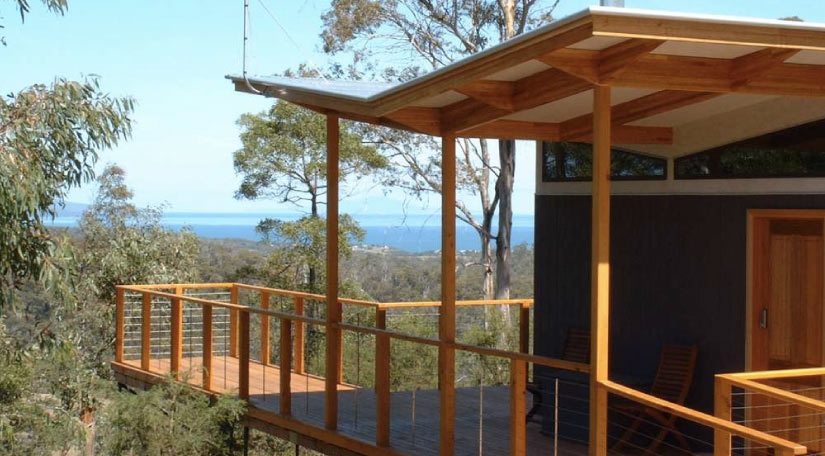
Contact Freycinet Eco Retreat
Address: 1799 Coles Bay Rd, Coles Bay Telephone: (03) 6257 0300 Website: www.freycinet.com
Huon Bush Retreats is a luxury eco-retreat located inside an extensive private nature reserve in the middle of the Huon Valley, about 50 mins drive south of Hobart. The Bush Retreats achieve carbon-positive status through their carefully selected building materials, the use of a mix of clean energy sources, and responsible day to day operations that create minimal effect on natural surroundings.
Captivating bush trails surround the property where walkers discover various animals and insects, stunning rainforest and hidden waterfalls. Visitors can cosy up in one of the cabins or tepees or bring their own tent. Learn more abut the Huon Bush Retreats here .
Contact Huon Bush Retreats
Address: 300 Browns Rd, Ranelagh Telephone: (03) 6264 2233 Website: www.huonbushretreats.com
Way up in the northwest of Tasmania is the Tarkine Wilderness Lodge, an eco-retreat built in 2003 to protect and preserve the area’s breathtaking wilderness. Visitors to the lodge enjoy daytime walks, night-time walks (to try and spot the infamous Tasmanian Devil) and other eco-activities.
The lodge holds an advanced ecotourism certification thanks to its environmentally friendly practices:
- Rain water and dam water is used for all water supplies.
- Solar power is the main source of electricity, with a gas generator for back up.
- Organic produce is grown onsite and served to guests during evening meals, and any extra food requirements are sourced from local suppliers and growers.
Learn more about the Tarkine Wilderness Lodge here .
Contact Tarkine Wilderness Lodge
Address: 1 Newhaven Track, Meunna Telephone: +61 3 6257 8574 Website: www.tarkinelodge.com
What Is Ecotourism?
As described by The International Ecotourism Society, ecotourism is “ responsible travel to natural areas that conserves the environment, sustains the well-being of the local people, and involves interpretation and education “.
The practise of ecotourism also includes broader initiatives like:
- Environmentally responsible construction methods when building/modifying tourism dwellings and attractions, and
- Consideration of the aesthetic/visual impact of tourism dwellings and attractions on their natural surroundings, and
- Environmentally responsible education for both staff and visitors, therefore encouraging safe and accountable behaviour from both parties.
Ecotourism should strive to protect and preserve the wellbeing of surrounding flora and fauna, while simultaneously educating visitors to enjoy but not to disturb such wildlife and plant life.
Effective ecotourism combines tourism with rich local culture and preservation of the environment so that all three benefit from each other. The financial activity brought in by visitors should help conserve the natural environment while creating employment opportunities for local residents.
Tasmania’s Ecotourism Goal: Become The Best In The World
More than a million people visit Tasmania each year to experience its unspoilt natural environment and pristine waters. To ensure this happens for years to come, the Tourism Industry Council Tasmania (TICT) has one clear goal in mind: to position Tasmania as one of the leading ecotourism regions of the world through the widespread promotion and successful adoption of a globally recognised ecotourism certification called EarthCheck. Many of the 700 targeted tour companies in Tasmania have been evaluated and are now Earthcheck certified .
EarthCheck provides feedback on the tourism provider’s operational efficiency, waste production/management and unique ways in which the provider can protect the natural environment. After their evaluation, providers are awarded an ‘Earth Rating’ which shows how they fare against internationally recognised criteria.
Ready to keep exploring?
Explore more of Tasmania on another trail.
Username or E-Mail
Forget Password?
Do not have an account?
Already a member.

2 Day Cradle Mountain Tour
4 day wild tasmania tour, private tours, explore tasmania’s wild natural beauty, wild tasmania tours.
We are a locally owned and operated tour operator based in Hobart. We specialise in small group nature based hiking and sightseeing tours throughout Tasmania.
Explore with us on your next Tasmanian adventure.
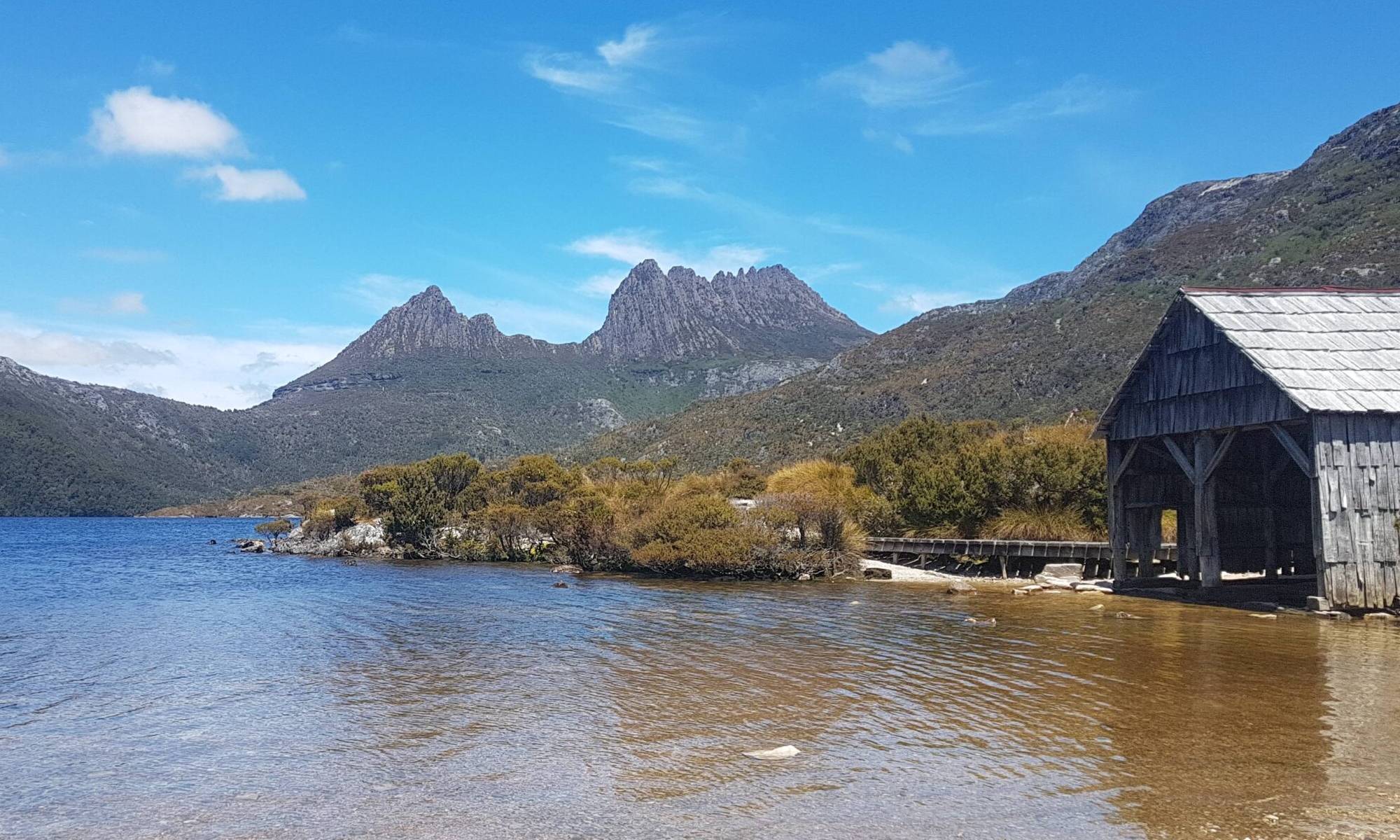
wildtasmaniatours
Nature, hiking and sightseeing tours in Tasmania. 🌲🥾😎 Book your wild adventure today.
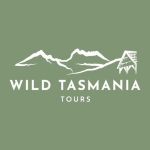
Take a tour from the experts who know Napa Valley & California
Wine tasting.
Whether it’s for a week, a day, a glass or a meal – now’s the perfect time to experience the Napa Valley Spirit for yourself.
Grape Varieties
Private Dining
Proceed booking, already a member.
Username or E-mail
Don't have an account? Create one.
Or continue as guest.

Search the site
ChrisCrerar-1183.jpg)
- PWS accredited partnerships

- Conducting business in parks and reserves
Related Pages Expand/Collapse
- Property Services
- Commercial filming and photography
The Tasmania Parks and Wildlife Service recognises and values the role of nature based tourism operators in promoting and encouraging visitors to enjoy and appreciate Tasmania's parks and reserves. We are committed to working cooperatively with the Tourism Industry Council of Tasmania (TICT) to provide quality visitor experiences that reflect positively on Tasmania's tourism industry while also conserving the values that attract people to the experience in the first place.
The PWS staff work closely with the TICT's Australian Tourism Accreditation Program which is designed to raise professionalism of the industry through implementation of business management practices and standards.
As part of the partnership, nature based tourism operators and businesses who are both accredited with the TICT and hold a business contract with the PWS, will be able to use the PWS Accredited Licensed Operator logo which allows our partners to use the special logo in marketing collateral and website promotion.
- bluederbywild
- Nov 9, 2021
Tasmanian and Global Outdoor Adventure and Tourism Businesses Call to End Native Forest Logging
Updated: Mar 6, 2022

Today an Open Letter to the Tasmanian Premier Peter Gutwein, The Hon S. Courtney (Minister for Tourism), and the Hon. R. Jaencsh (Minister for Climate Change) was tabled to Parliament calling for the protection of Tasmania’s native forests to safeguard our nature-based tourism sector and Brand Tasmania, as part of taking practical action on climate change and biodiversity loss.
More than 200 signatories including Patagonia, Paddy Pallin, Tas Gravity Enduro Mountain Bike competition, Spring Bay Mill, Derby Mountain Bike (MTB) businesses, and Derwent Valley Tasmania Tourism ( representing over 100 businesses ), have put their brands behind the need for urgent action to stop the logging of Tasmania’s native forests. With immediate focus on the logging planned in the two Krushka’s forests around the iconic Blue Derby MTB trail network, recognised as the jewel in the crown of Tasmania’s MTB industry, scheduled to start any time in November.
Blue Derby Wild coordinator Louise Morris said, ‘’We’ve been overwhelmed with support from businesses and outdoors adventurers who understand the importance of protecting Tasmania’s native forests for the critical role they play in tackling climate change and biodiversity loss. We’re seeing with the COP 26 meeting taking place in Glasgow right now, that the world is demanding action on climate change. Tasmania can achieve true zero emissions by protecting our native forests which is an attainable and a practical part of that picture. Immediate action needs to involve protecting the Blue Tier glacial refugia forests and removing the three Blue Derby Gondwana native forests of Krushka’s (CC105A and CC119A) and Atlas (CC120B) from logging and burning plans.”
‘’There's no doubt Tasmanian's accessible wilderness areas and our nature-based attractions are our state's biggest tourism drawcard (TRA 2014). As operators we've witnessed first-hand how extremely vulnerable the Tasmanian tourism industry is to the current challenges of the pandemic and the impacts of the intense 2016, 2019 bushfires that swept through Tasmania burning over 100,000 hectares of World Wilderness Heritage Area combined. Protecting our native forests will protect the Tasmanian brand, retain carbon, stop carbon emissions from logging and burning and protect biodiversity in the region. This will also be a practical step towards meeting our ambitious tourism target; to establish Tasmania as a global leader in responsible and sustainable tourism and to become a carbon-neutral destination. If we’re going to reach this goal, we need to take action today,’’ said Fiona Weaver, Tassie Bound Adventure Tours
“To think logging of native forests goes unnoticed by visitors to Tasmania and that this outdated practice doesn’t damage our growing brand is something the current government needs to have a good hard look at. Once a brand is damaged it can be hard to repair. Not to mention that preserving these forests will have huge benefits for endangered wildlife habitat, carbon storage and providing clean air and water that benefit us all. I believe Tasmania is nearing a time where we transition from destructive industries and become a leader in sustainability. Ending logging in high conservation forests is a no-brainer, I hope the Gutwein government has the foresight to show real leadership on this matter,” said Kenna Reid-Clark, Vice-president of the Tasmanian Wilderness Guides Association.
The Tassie Tourism and events sector has been hit hard over the last two years. We have huge potential to value the pristine and wild Tassie brand to delight customers coming into the state. Protecting and celebrating our natural values alongside the tourism attractions is crucial to make sure we put our money where our mouth is. Customers and visitors will be savvy to the environmental impact of our industries and are expecting us to value protected environments and ecosystems. We call on the state government to work smartly to consider the huge blossoming potential these special places hold for the rebound of the tourism sector and the long-term sustainability of our clean green state,” said Joe Pickett, General Manager, Spring Bay Mill
‘Protecting the carbon dense forests of the iconic Blue Derby MTB tourism destination area has the immediate impact of stopping the carbon emissions associated with logging and burning native forests, protecting local biodiversity and our forests will help safeguard the Blue Derby brand which is the jewel in the crown of Tasmania’s MTB industry.’’ Julia Seymour, Owner Pinned Property Management, Derby.
“The current destruction of Tasmania’s unique carbon rich forests needs to end. Tasmanian eBike Adventures stands proudly with other aligned tourism businesses, environmental campaigners and adventure brands to call on our government to intervene and halt the proposed logging of the Blue Tier forests, and globally iconic Krushka’s Blue Derby Mountain Bike Trails. Even on this little island at the bottom of the earth we cannot ignore the urgent, environmental, social and economic impacts of climate change. The perception of Tasmania as a haven of wilderness and beauty is symbolized and embodied in our wild forests. It is time to work together as a community to protect what these forests represent in the fight against global climate change and biodiversity loss. If we genuinely have a vision for Tasmania as a world leading environmental tourism destination, we must protect our authenticity as a destination by caring for the special environmental and social values that underpin our brand,” Ben Rea, Owner Tasmanian eBike Adventures.
Copy of Letter Below:
The Hon Premier Peter Gutwein,
Hon Sarah Courtney MP, Hon Roger Jaench MP.
Level 9, 15 Murray Street
HOBART, TAS 7000
Dear Premier Gutwein; Hon S. Courtney MP and Hon R. Jaensch MP:
As nature-based tourism operators and outdoor adventurers passionate about growing Tasmania’s unique natural assets and native forests, we call on you to protect our High Conservation Value (HCV) native forests from logging.
The tourism industry vision for a response to climate change is ambitious and genuine in its goal for Tasmania to be a carbon-neutral destination. This is aligned with the Tasmanian Government Climate Action 21 agenda.
As The Premier and Ministers for Tourism and Climate change respectively it is incumbent upon you to position Tasmania to take meaningful action on climate change, which includes protecting our public native forests - nature's living carbon capture and storage banks. These same Gondwana remnant native forests are one of the most notable draw cards for visitors and nature-based tourism experience seekers. These forests are the foundation for a vision for Tasmania that celebrates and nurtures our public forests, unique biodiversity and natural assets.
The vision for Tasmania is to be a carbon-neutral state, aligned with the Tasmanian Government Climate Action 21 agenda. There are measures we can introduce quickly to achieve this goal; immediate and practical action including removing the three Blue Derby Gondwana native forests of Krushka’s (CC105A and CC119A) and Atlas (CC120B ) from logging and burning plans. Protecting the carbon dense forests of this iconic tourism destination area has the immediate impact of stopping the carbon emissions associated with logging and burning Gondwana native forests, protecting local biodiversity and will help safeguard the Blue Derby brand.
The tourism industry in Tasmania is built upon the clean, green, and clever brand. This brand is being undermined by ongoing logging of our native forests that hold flagship tourism experiences such as the Blue Tier, Blue Derby, Ben Lomond, The Styx Valley of the Giants, Maydena, the Weld/Tahune forests and the takayna/Tarkine.
Brand Tasmania promises an island at the bottom of the world where ancient forests and wild rivers await to reconnect people to their wild side, through nature based tourism experiences found nowhere else on earth. Logging these publicly owned native forests takes away the promise of wilderness experiences, replacing it with industrial logging operations.
The Tasmania Visitor Economy Strategy (T21) vision for Tasmania includes responsible stewardship of our natural environment and protected areas, positioning Tasmania as a global example of environmentally and socially sustainable tourism
We welcome the opportunity to speak with you on how we can build a win/win plan for the future that protects our native forests for climate action, biodiversity and building a truly sustainable and responsible future for tourism in Tasmania that values our forests and natural assets.
Adventure Trails Tasmania
Architects Declare, Tasmania
Graham McLean, Basecamp Tasmania
Beautiful Isle Wines
Marcus Enno, Beardy McBeard
Megan Lourie, Ben Lomond Alpine Hotel
Simon Holmes, Big Shed Studios
Adam Campbell, Big Mountain Derby
Black Cow Bistro
Tara and Steve Howell, Blue Derby Pods Ride
Louise Morris, Blue Derby Wild
Greg Irons, Bonorong Wildlife Sanctuary
Jo Lee, Cedar House Derby
Anthony O’Hern, Cradle Mountain Canyons
Christiaan Bradley, Christiaan Bradley Surfboards
Dean Lucas, Dean Lucas Racing
Damien Neilson , Derby Bike Shop
Aleks and Justine, Derby Church
Peter , Derby Forest Cabins
Derwent Valley Tasmania
Tourism : A collective of over 100 local tourism operators
Jane Hilliard, Designful
Wade Anthony, Devils @ Cradle
Tom Wrigley, DHarCo MTB Clothing
Dialled in Derby
Jo Lee, Cedar House and Cottage
Sarah Williams, Cedar Cottage Meander
Dan Broun, Photographer & Filmmaker
Joshua George, Eat the Wild
Sophie and Kurt, Esplanade Trail House Derby
Eudaimonia Tasmanian Cycling Tours
Evolution Mountain Bike
Elias Eichler, Franklin River Rafting
Alissa Ward, Find Your Feet
Hillary McAllister, Director, For Wild Places
Sean Cadman, Forest Walks Lodge
Elias Eichler, Franklin River Rafter
Susan Carrins, Freycinet Adventures
Y.D Bar-Ness, Giant Tree Expeditions
Giants Table Cottages Maydena
Liz Virtue, Glen Derwent Accommodation
Julie Porter and Charles Burns, Heritage Sailing Tasmania
Jane Hilliard, Homeful, by Designful
Rebecca & Tristan Campbell, Honey Tasmania
Dr Tonia Cochran , Inala Nature Tours
Josh Pringle, Keep Tassie Wild
Katarzyna Lagodzka, Kersbrook Cottage
Greg Murray, Kooparoona Niara Tours
Brown Family, Krushka’s Cottage Derby
Jimmy Cordwall, Making Tracks
Marions Vineyard
Simon French, Maydena Mountain Bike Park
Jo Morin, Maydena Mountain Cabins
Moonbird Beach Shack Tasmania
Outdoors People for Climate Action
Tim Pallin, Paddy Pallin Pty Ltd
Charles Thompson, Park Trek Outdoor Experiences
Shannon Bourke, Patagonia
Pedalheads MTB St Helens
Caleb and Naomi Buster, Pilgrim Blue
Julia Seymour, Pinned Property Management
Josh Fletcher, Protect Our Winters Au
Dr Nicole Anderson, Scenic Wilderness Photography
J. Brakey, G. Eckel, J. Walton, Raida Restaurant St Helens.
Paul O'halloran, Rare Earth Tasmania
Jennifer Cossins , Red Parka
Roaring 40’s Kayaking
Toby Shingleton, River Cabins Derby
Matthew Newton , Rummin Productions
Cathy Fitzgerald, Secret Bank Society
#1800 Sendit
Shred Map Jerseys
Joe Pickett, Spring Bay Mill
Bianca Welsh, Stillwater Restaurant
Richard Tebb, Stoke Wizard Media
Surfrider Foundation Tasmania
Danny King, Tas Gravity Enduro Series
Mark McCAnn, Tailored Trails
Sam Burke, Tarkine Running Co
Nicholas Scharm, Tarkine Trails
Kenna Reid-Clarke, Tasmania Wilderness Guides Association
Fiona Weaver, Tassie Bound Tours
Ben Rea, Tasmanian E-Bike Adventures
Aran Price, Tasmanian Safaris
Tasmanian Walking Company
Ben and Stacey Jones, The Derby Lodge
Andrew and Anne Marie Wallis, The Keep
Carol Beaumont, The Peak Forest Retreat
Steve Pearce, The Tree Projects
Susie Aulich, The Trig Unique Accommodation on Mt Arthur
Emma Fox, The Tuscan Fox
C Booth & G Cashion, Tin Dragon Trail Cottages
Mark Playford, Trail View House Derby
Megan Rose, Trans Tas Enduro MTB
Holger Strie, Trek Tours Australia
Androo Kelly, Trowunna Wildlife Sanctuary
Candace Elms-Smith, Tracks Less Travelled
Lincoln Quilliam, Trail Ventures
Andy Crawford, Walk on Kunanyi
Sam Shillingford , We The Riders MTB Apparel
Ingrid Daniel, Whale Song Shack
Rob Blakers, Wild Island
Wild Island Women
James McCormack, Wild Magazine
Susanne Beatow, Wild Ocean Tasmania
Daniel Van Duinkerken, Wild Peek Au
Recent Posts
Blue Derby Wild application for logging injunction on Krushka’s forests refused, while special leave application proceeds to High Court of Australia
We're taking Tasmania's unlawful logging system to the High Court of Australia.
Blue Derby Wild’s unlawful logging challenge to Sustainable Timber Tasmania, progressing to High Court of Australia
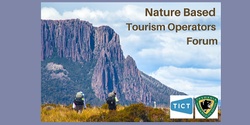
Nature Based Tourism Operators Forum - North & North-West
Event description.
Accredited Tourism Operators with Commercial Visitor Service Licences to operate within Tasmania's Wilderness World Heritage Areas, National Parks, and other protected areas, are invited to the 2022 Nature Based Tourism Operators Forum.
This is the first NBTOF we've been able to hold since before Covid, and is a timely and important opportunity for Accredited CVS License Operators to come together with the Tasmania Parks & Wildlife Service before the start of the 2022/23 Peak Visitor Season. The agenda will feature a comprehensive briefing from PWS on key issues for operators around licensing, fees and other management issues, along with the pipeline of infrastructure and maintenance works across the State, and other PWS major projects. We'll also have a discussion around current workforce and insurance challenges for the sector, along with presentations on the Tasmanian tourism industry's carbon neutrality and positive impact agendas. The Agenda will be circulated closer to the event. For now, you can register for the sessions below. Please note: This event is FREE and exclusive for Tourism Accredited Nature Based Tourism Operators with current Commercial Visitor Service (CVS) Licenses and Leases with PWS.
If you're not tourism accredited or a CVS License Holder, please contact TICT at [email protected]
Tickets for good, not greed Humanitix donates 100% of profits from booking fees to charity
Refund policy
No refund policy specified.
Greens to press for funding of nature tourism expansion in balance of power
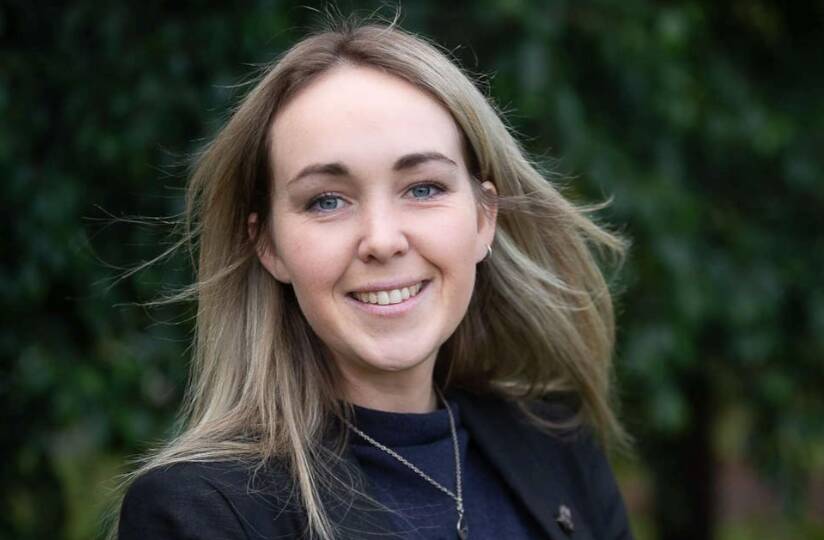
The Tasmanian Greens will advocate to fund a $13 million expansion of nature-based tourism in the state, including investing in infrastructure in Tasmania's eight tree tourism destinations.
Subscribe now for unlimited access.
(min cost $ 0 )
Login or signup to continue reading
The party's Lyons candidate Tabatha Badger said a strong tourism industry was "crucial" in providing sustainable jobs for Tasmanians - particularly in regional areas.
"For too long our regional communities have been at the mercy of boom and bust industries, and it's time to change that," she said.
"In the balance of power, the Greens would invest $13 million over the next four years into new nature tourism tourism possibilities," she said.
"Untapped markets for Tasmania, including big tree tourism, a dark sky sanctuary - the largest in Australia and one of the largest in the world."
Dark sky sanctuaries are isolated parks or places that have exceptionally high quality starry nights. There are 18 of these in the world across 22 countries, according to darksky.org.
"We are taking a regenerative approach of low impact tourism possibilities that are high yielding, and can also mitigate seasonality for regional businesses," Ms Badger said.
If it achieves the balance of power, the Greens have promised to advocate for:
- The Tasmanian Wilderness World Heritage Area to be declared a dark sky sanctuary
- Development of a birdwatching tourism strategic plan for Tasmania
- The government to work with conservation organisations to promote conservation tourism products
- The restoration of Parks and Wildlife as a 'well-resourced service', with a core focus of protecting and enhancing the environment of Tasmania's parks
"The Greens' plan for environmental protection alongside investment in low-impact and high-yielding tourism will ensure that Tasmanians and visitors alike can experience our state's unique places and experiences into the future," Ms Badger said.
Nature-based outdoor activities generated $334 million in spending and was responsible for 3,100 full-time equivalent jobs in 2016.
Benjamin Seeder
Advertisement
Get the latest Launceston news in your inbox
Sign up for our newsletter to stay up to date.
We care about the protection of your data. Read our Privacy Policy .


IMAGES
VIDEO
COMMENTS
While your licence will have a number of conditions that relate to your specific business or activity, you will also be required to obtain accreditation with the Tourism Industry Council of Tasmania, or equivalent industry body, within 12 months from the commencement date of your licence. The Tourism Industry Council of Tasmania website will ...
Contact details. Please use these contact details for help or more information: Nature Based Tourism Operators. Parks and Wildlife Service. Department of Natural Resources and Environment. Tasmania. Mailing address: GPO BOX 44. Hobart, Tasmania 7001.
A new Lease and Licence Portal has been developed and designed by NRE Tas. This portal streamlines the publication process of active agreements that have been issued on reserved land and supports the Tasmanian Government Transparency Agenda. ... (Nature Based Tourism, Reserved land and Crown land) ... a division of the Department of Natural ...
Extensive damage has been done to this state's natural environments during the past two centuries. For example, more than 85 per cent of lutruwita's old-growth mountain ash forests are gone. Tasmania's national parks and reserves play a crucial role in providing biodiverse safe havens for up to 680 threatened plant and animal species.
If you intend to provide nature based tourism services, you will need a Nature Based Tourism licence. To obtain a licence to conduct mining activities, you must also obtain mining rights. ... Hobart, Tasmania 7001 : Phone: 03 6169 9015: Email: [email protected]: Supporting information ...
Nature-based outdoor activities generated $334 million in spending and was responsible for 3,100 full-time equivalent jobs in 2016. Our future is investing in nature-based tourism that enhances Tasmania's unique environmental values, which is why the Greens have today launched a comprehensive nature-based tourism plan. The Greens will:
That is why the Hodgman Liberal Government invested over $15 million this financial year for nature based tourism experiences to help create Tasmania as a world-class eco-tourism destination for the world. The latest visitor statistics tell us that over 520,000 tourists visited National Parks in Tasmania - an amazing increase of over 13 per ...
Australian nature-based tourism and ecotourism have become popular forms of recreational activity. Tasmania attracts twice the Australian national average number of nature-based tourists and ecotourists (thirty per cent). The growth of this tourism sector has prompted measures to ensure that experiences are of high quality, and that environmental impacts are adequately managed. ISO 14000 is an ...
The difference between a licence and a lease is that if you have a lease other people can also use the area at the same time. ... Nature Based Tourism licences are for businesses running a commercial tourism or visitor activity on our land. ... Sustainable Timber Tasmania acknowledges and pays respect to Tasmanian Aboriginal people as the ...
Through a spokesperson, it says its approach has "been very successful over many years in promoting Tasmania's unique wilderness and nature-based tourism experiences on the world stage", and ...
Where to stay East coast highlights. Maria Small Penitentiary Accommodation; Maria Island camping - Darlington; Richardsons Beach, Honeymoon Bay and Ranger Creek camping
[email protected] www.parks.tas.gov.au. Application to Licence Guide Sheet. 1 of 2. PHOTO GUIDE. Photos tell a story about the land and any built structures. It allows the PWS to easily determine what you want to do and whether an inspection of the property is needed before your application proceeds.
Environmentally responsible tourism ensures Tasmania's precious geographic features are preserved for the visitors of tomorrow… while being accessible and inspiring to the visitors of today.. To reduce the impact of human activity on Tasmania's stunning natural assets, environmentally responsible tourism, or ecotourism, is practiced at dozens of locations across the island.
This paper assesses the relevance of NEAP in the Tasmanian nature-based tourism and ecotourism industry through in-depth interviews with a key informant group and a comparative analysis of interview data. The paper introduces nature-based tourism and ecotourism definitions and discusses the growing relevance of ecotourism accreditation.
Accredited Tourism Operators with Commercial Visitor Service Licences to operate within Tasmania's Wilderness World Heritage Areas, National Parks, and other protected areas, are invited to the 2022 Nature Based Tourism Operators Forum.
Explore Tasmania's wild natural beauty on our affordable nature-based hiking tours. We offer adventure tours around Tasmania, which include accommodation. We also offer private customized tours around Tasmania to suit your needs. [email protected] 0457028120. Login.
Nature-Based Tourism Nature is a significant part of Tasmania's identity, lifestyle, and economy. In 2016, nature-based outdoor activities generated $334 million and was responsible for 3,100 full-time equivalent jobs.1 Wild Tasmania is a key motivation for visitation, and the state's future is in investing in nature-based tourism that ...
PWS accredited partnerships. The Tasmania Parks and Wildlife Service recognises and values the role of nature based tourism operators in promoting and encouraging visitors to enjoy and appreciate Tasmania's parks and reserves. We are committed to working cooperatively with the Tourism Industry Council of Tasmania (TICT) to provide quality ...
Today an Open Letter to the Tasmanian Premier Peter Gutwein, The Hon S. Courtney (Minister for Tourism), and the Hon. R. Jaencsh (Minister for Climate Change) was tabled to Parliament calling for the protection of Tasmania's native forests to safeguard our nature-based tourism sector and Brand Tasmania, as part of taking practical action on climate change and biodiversity loss.More than 200 ...
A long-term Tasmanian tourism operator is calling for more to be done to license and regulate nature-based tourism businesses in the state. Read Today's Paper Tributes Rewards
Get tickets on Humanitix - Nature Based Tourism Operators Forum - North & North-West hosted by Tourism Industry Council Tasmania . Westbury Sports Centre, 21 Franklin St, Westbury TAS 7303, Australia. Thursday 13th October 2022. ... If you're not tourism accredited or a CVS License Holder, please contact TICT at [email protected] ...
The Tasmanian Greens will advocate to fund a $13 million expansion of nature-based tourism in the state, including investing in infrastructure in Tasmania's eight tree tourism destinations.